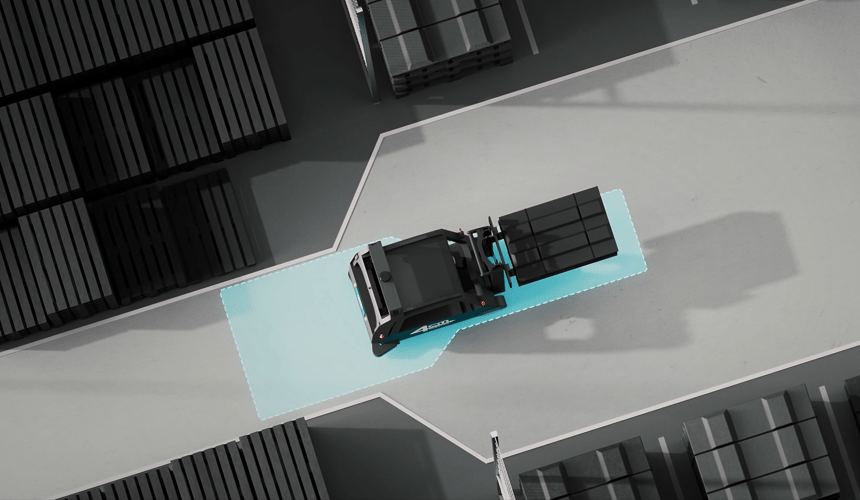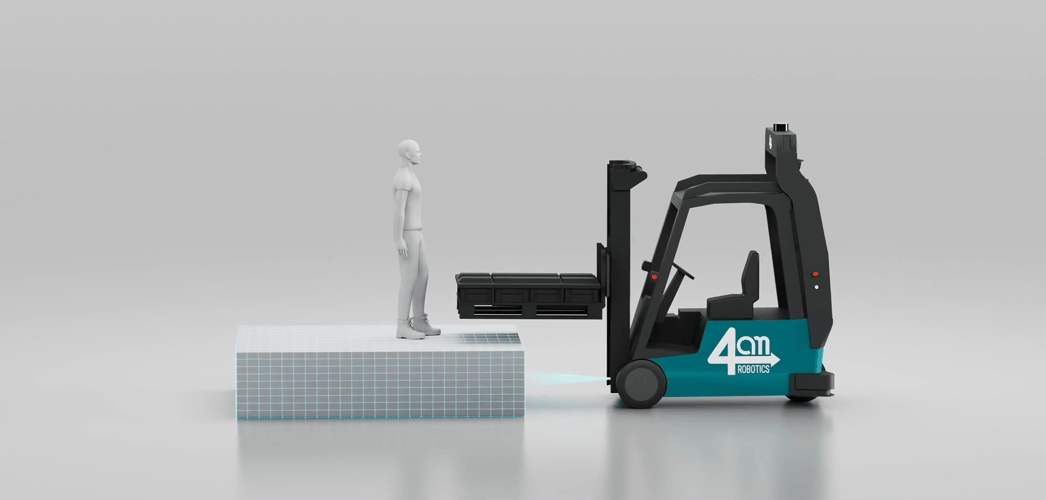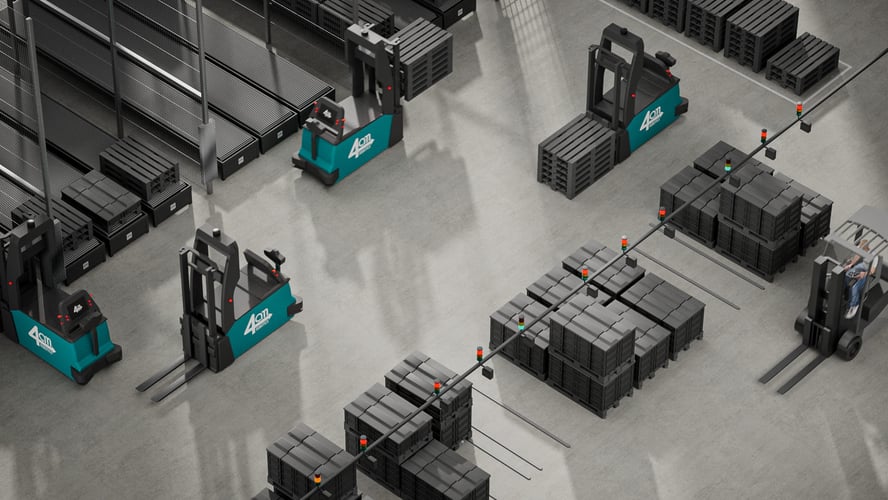← SCIO Updates
Autonomous indoor forklift in a customer-specific endurance test


Let's go vertical! The two autonomous indoor forklifts AFi-M and AFi-H expand the 4am Robotics GmbH product portfolio and enable an efficient vertical transport in intralogistics. Their capabilities were demonstrated by the AFi-H in an endurance test with customer-specific requirements.
The two autonomous forklifts AFi-H and AFi-M connect the interfaces in the area of conveyor technology, rack and block storage and optimize vertical transport in warehouses and production facilities. They can even be used in complex factory environments without having to modify the infrastructure or the environment beforehand.
Due to 4am Robotics patented solution, the integrated sensor technology, the autonomous forklifts are able to detect obstacles and avoid them. This technology is also used in other 4am Robotics products.
The AFi-M is able to pick up and transport a load of up to 1,500 kg, while the AFi-H has a maximum lifting capacity of 2,000 kg.
Their abilities were tested during an endurance test of the AFi-H based on a specific customer requirement. Watch the video below!
In this test, the forklift was supposed to transport KLTs (small load carriers), which were stacked on Euro pallets, to nearby conveyor belts. The innovative technology enabled the automatic guided vehicle to fulfill its task with the highest precision and efficiency.
As a result, the AFi-H was able to reliable pick up the KLTs, transport them and place them on the relevant conveyor belt. In this way, it could prove that the AFis can ensure a smooth material flow in several warehouse levels.
In addition, the AFis impress with their high flexibility in use with different container sizes. This is made possible by their dynamic protective fields, which can be switched over depending on the container size. As a result, the forklift automatically adapts to the specific requirements and optimizes the transport process. This results in an increasing efficiency of production as well as an avoidance of shortages.


